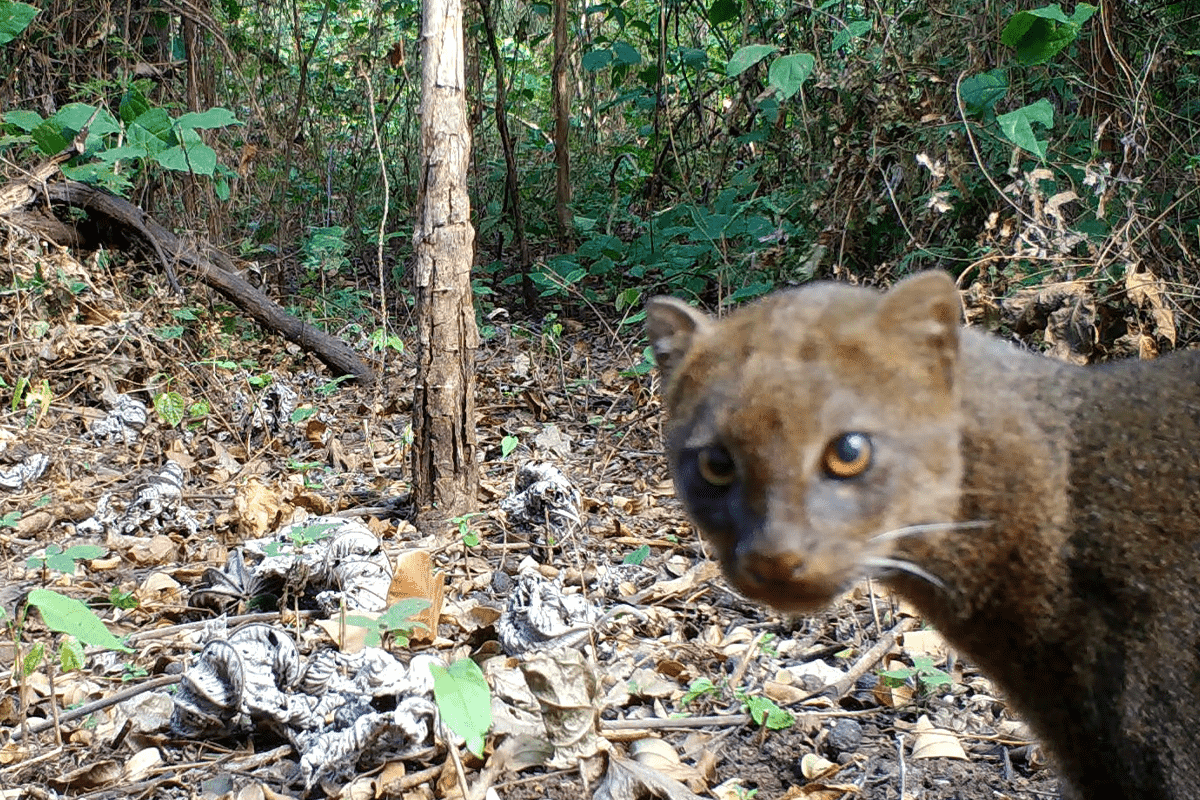The jaguarundi is a unique beast. Though it counts as one of Costa Rica’s six species of wild cats, it doesn’t look particularly catlike. Their long slender bodies and short noses often leave lucky observers confused as to what they’ve just seen. Often at a loss as to whether they have just seen a species of feline or some kind of big weasel.
Once while working at a wildlife rehabilitation and release center, a tourist approached me hesitantly with her camera. She told me that she had taken a picture of a black cat the day before while hiking in a national park and wanted me to identify the species for her. She proudly presented her camera and on the little screen was a beautifully framed picture of a tayra.
She thought she had photographed a jaguarundi and could be forgiven for the mistake. Coming in at 26 inches in length and about 11 pounds, a tayra is a black jaguarundi-sized weasel that is approximately the same size, weight, and color of the black color phase jaguarundi.
That leads us to another unique feature of the jaguarundi. It has multiple color phases, meaning that within this one species, there are individuals of several different colors. Within Costa Rica you can find black, gray, a kind of grizzled brown/gray and even orange individuals. What’s really wild is that a female of one-color phase can have young of different colors.
They say if you’re fortunate enough to see any wild cat species in Costa Rica, you’re most likely to spot a jaguarundi. There are a few reasons for that.
First, they can survive in a wide range of habitats. If you look at a range map for the species in Costa Rica, it can be found in almost any part of the country.
Second, they are the most diurnal of the cat species in Costa Rica. This means they are active during the day, spending large portions of the day covering ground within their territories looking for food.
So, you could be hiking in environments ranging from the tropical dry forest of Guanacaste to the lush forests of Osa and have a chance at spotting this unique cat. It’s easy to identify. Just remember it’s black or gray or orange and doesn’t really look like a cat. Ok, maybe it’s not that easy to identify.
My personal experience with the jaguarundi reflects its vast range across the country. I had the good fortune of seeing a quick glimpse of an orange phase adult in Hacienda El Viejo National Wildlife Refuge in Guanacaste.
I’ve recorded many videos of all the color phases in camera trap projects across the country including Guanacaste, Limon and Osa. In one camera trap project along with coast of Guanacaste, I recorded an orange adult female and black juvenile walking on a wildlife trail during the day.
The contrast of the two different colored individuals was remarkable. In another project on a property with a section of wetlands, also in Guanacaste, I recorded several videos over several years of at least two individuals hunting black-bellied whistling ducks. One video recorded an orange female moving through the tall grass near a pond full of ducks with a weeks old juvenile in tow, presumably in training to be the next generation of duck hunter.
Please enjoy the accompanying video of jaguarundis captured in camera trap projects throughout Costa Rica and learn to love the jaguarundi. It’s truly a unique beast.
About Vincent Losasso
Vincent Losasso, founder of Guanacaste Wildlife Monitoring, is a biologist who works with camera traps throughout Costa Rica. Learn more about his projects at:






